The GCI Mountain Creek Golf Course
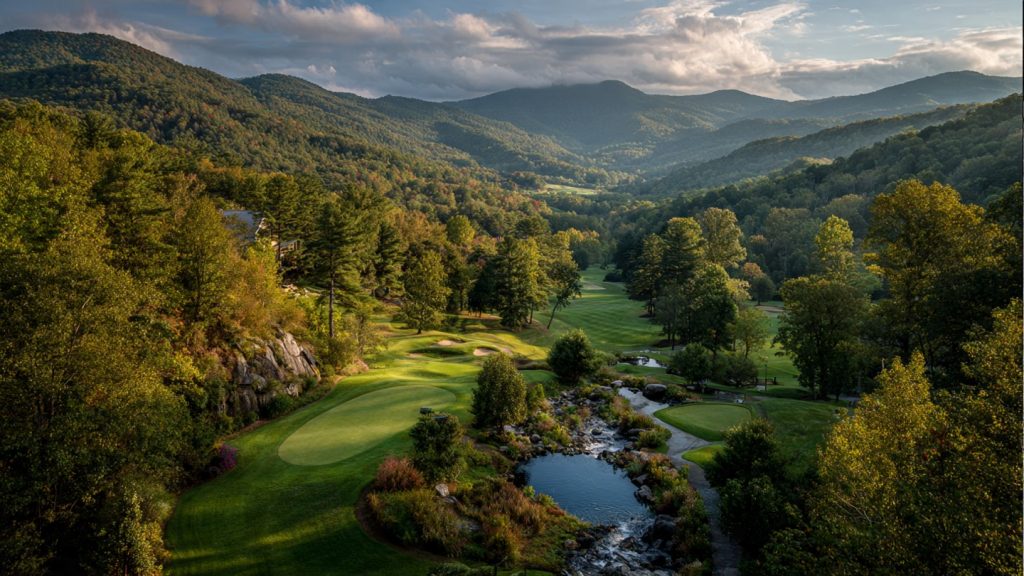
1. Executive Summary
This report provides a comprehensive design and technical overview for the Golf Course Intel Mountain Creek Golf Course, a premier 18-hole facility envisioned for a high-altitude location in Colorado. The conceptual design is rooted in a deep appreciation for classic golf course architecture, where the landscape itself serves as the primary inspiration. Rather than imposing an artificial layout upon the environment, the GCI Mountain Creek design philosophy seeks to create a strategic and beautiful course that works seamlessly with the existing natural features of the Rocky Mountains, including dramatic elevation changes, alpine forests, and a central winding creek.
The course is designed to offer a world-class experience that is both challenging for elite players and approachable for recreational golfers. This is achieved through a thoughtful routing that utilizes four distinct tee boxes—Blue, White, Gold, and Red—to provide a full spectrum of difficulty. The total yardage ranges from an accommodating 5,500 yards for the Red tees, designated for ladies and higher-handicap players, to a demanding 7,295 yards from the championship Blue tees. The design fully accounts for the unique physics of high-altitude golf, where the thinner air affects ball flight, requiring a different approach to club selection and shot strategy.
Included within this report are the full technical specifications for the course, including USGA-compliant Course and Slope Ratings for each tee box, a comprehensive scorecard with hole-by-hole yardages and handicaps, and detailed descriptions of each hole’s layout, hazards, and characteristics. This document serves as a blueprint for a course that is not only a competitive venue but a true “golfer’s paradise” that offers an unforgettable experience amidst the stunning beauty of the Rocky Mountains.
2. Course Vision: History and Design Philosophy
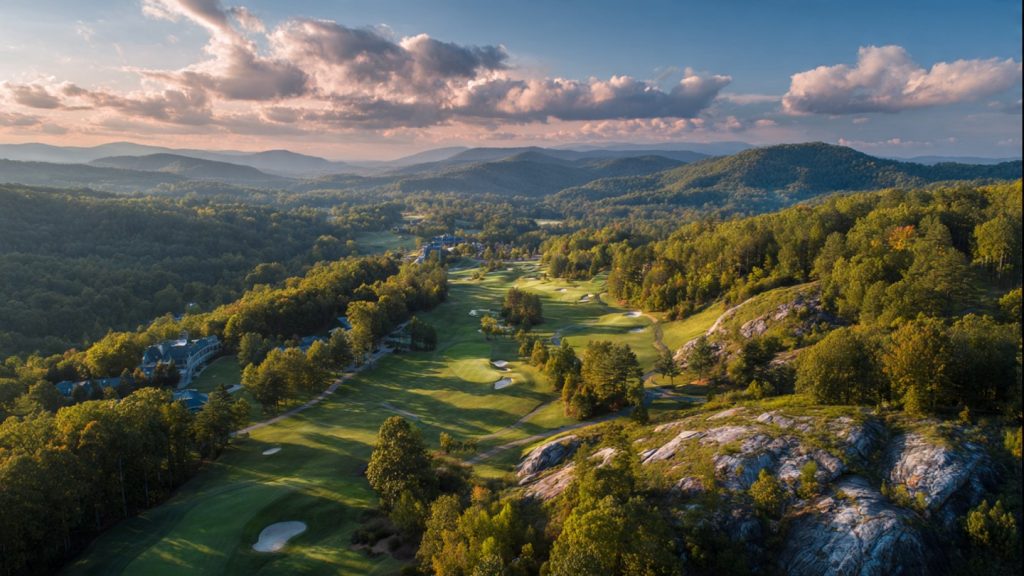
The GCI Mountain Creek Golf Course is situated on a sprawling parcel of land once used for historic ranching and timber operations. The design narrative of the course is intentionally tied to this heritage, with a commitment to preserving the land’s rugged and pristine character. A core tenet of the design was to avoid extensive earth moving, instead allowing the course’s layout to be naturally dictated by the existing topography. This philosophy is directly inspired by the work of modern classic architects who are widely regarded for their ability to create courses that feel as if they have always been a part of the landscape.
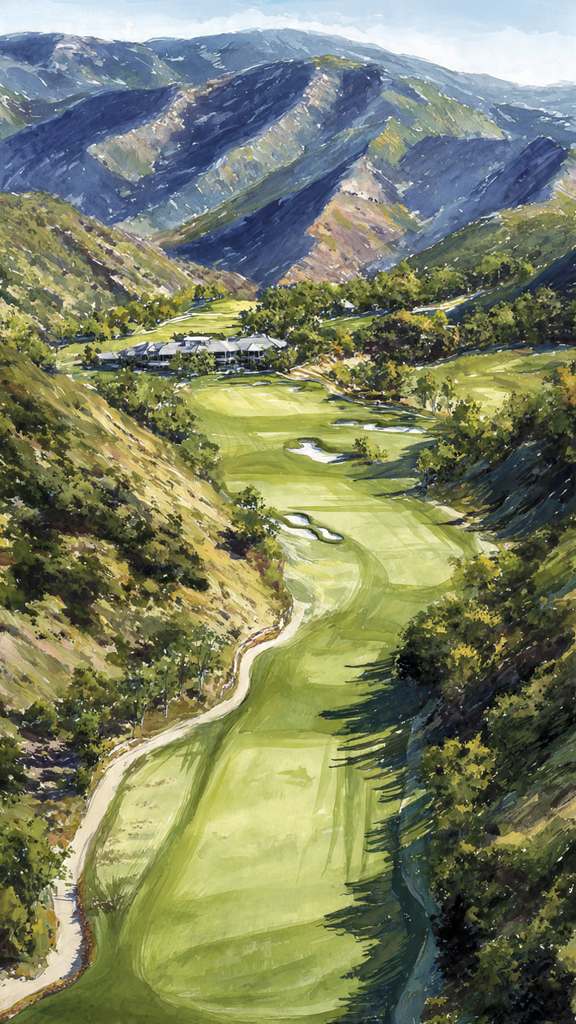
The routing of the course takes players on a dynamic journey through a variety of unique terrains, including open meadows, scenic hillsides, dense ponderosa pine and aspen forests, and rocky outcrops that are emblematic of the Colorado foothills. A central element of the design is the meandering creek that gives the course its name, which crosses fairways and borders greens, shaping the strategic challenge on multiple holes. The course’s design is meant to be a strategic test for golfers of all abilities, rewarding thoughtful shot placement over brute force. For example, the design avoids reliance on overly complex or manufactured hazards, instead using natural features like ravines, rugged barrancas, and dense stands of trees to challenge players. This approach not only creates a more authentic playing experience but also aligns with an efficient and environmentally conscious development model. The result is a layout that feels integrated into the landscape, with a timeless quality that will endure for generations of golfers.
The design also recognizes that a premier golf facility must cater to a wide range of players. While the championship tees present a stern challenge, the forward tees are meticulously routed to provide a fair and enjoyable experience. This is accomplished by strategically placing tee boxes to bypass overly severe hazards and by creating more generous landing areas for shorter hitters. This multi-purpose design ensures that the course can serve as a championship venue while simultaneously providing a relaxed and accessible setting for family outings and recreational play.
3. The GCI Mountain Creek Logo
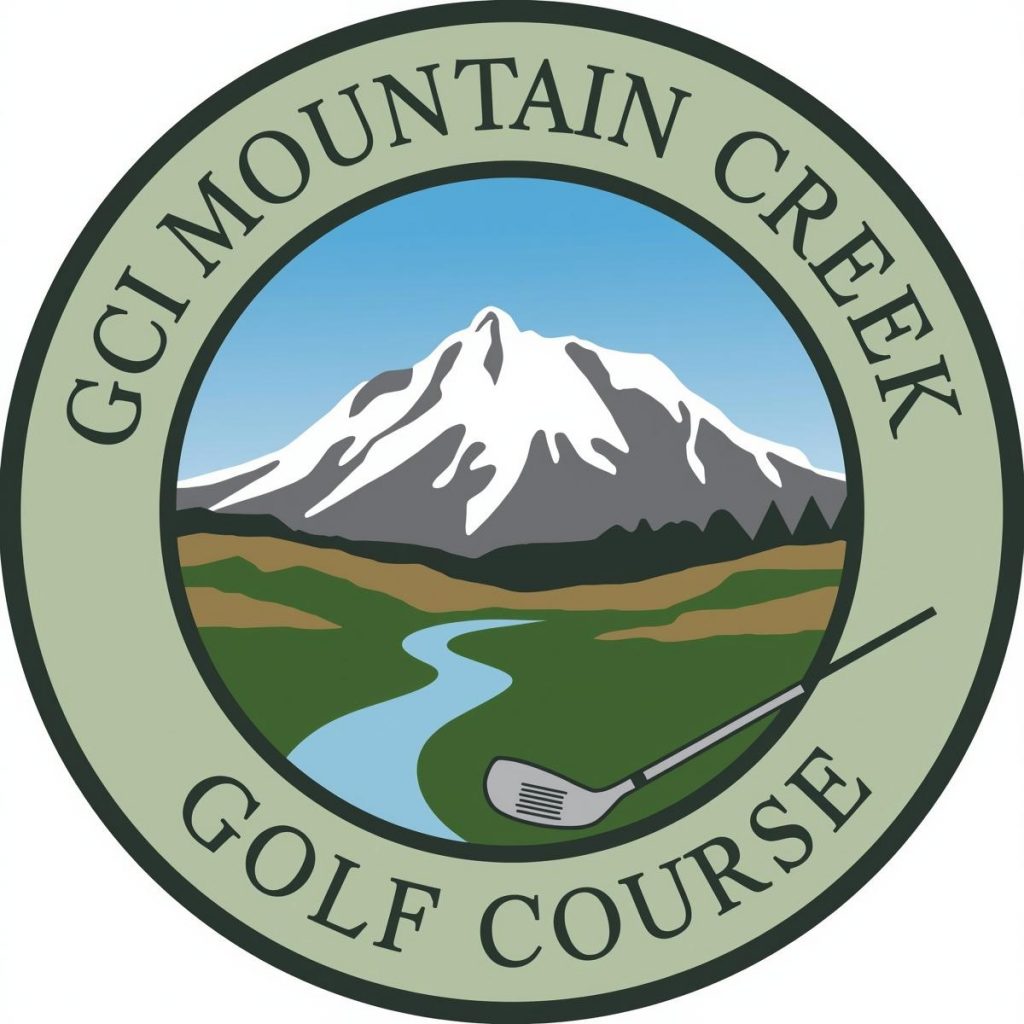
The GCI Mountain Creek logo is a stylized, circular emblem that captures the serene yet rugged essence of the course. The outer ring of the emblem prominently features the course name, “GCI MOUNTAIN CREEK GOLF COURSE,” in a classic, weathered serif font that evokes a sense of timeless tradition.
The inner portion of the logo presents a minimalist yet powerful image. A towering, snow-capped mountain peak, a subtle representation of Colorado’s majestic landscape, serves as the centerpiece. Flowing gracefully from the base of the mountain is a single, elegant line representing the central creek that winds through the property.
The color palette is composed of rich, earthy tones: a deep forest green for the surrounding landscape, a warm brown for the terrain, and crisp white and sky blue for the mountain and sky. The design harmoniously balances the natural elements of the course with the identity of the game, creating a memorable and sophisticated mark.
4. A Primer on High-Altitude Golf
Playing golf in the Rocky Mountains presents a unique set of challenges and advantages due to the effects of high altitude on the golf ball. At higher elevations, the air is significantly less dense, a phenomenon that has a profound impact on ball aerodynamics. The primary effect is a reduction in drag force, which allows the ball to move more easily through the air without slowing down as quickly as it would at sea level. This results in a measurable gain in distance. For example, a course situated at 5,000 feet of elevation will see a distance increase of approximately 5.8% for a standard 250-yard drive, which translates to nearly 15 additional yards. This gain is a critical consideration for both players and course designers.

In addition to distance, the thinner air also alters the ball’s trajectory and spin characteristics. Because the air imparts less force on the ball, the lifting force generated by backspin is reduced. This leads to a flatter ball flight and a shallower angle of descent. As a result, shots will have less height and will tend to roll out more upon landing, making it more challenging to hold the greens, especially on approach shots. Course architects must compensate for this by designing receptive greens with appropriate undulations and collection areas to prevent balls from running off the putting surface.
Furthermore, the reduced air density has a significant impact on shot curvature. A hook or a slice is created by side spin, which interacts with the air to pull the ball to the left or right. At higher altitudes, this lifting force is diminished, which means the ball will curve less severely. This can be a benefit for players who struggle with a severe hook or slice, making it easier to hit the ball straight. However, for skilled players who intentionally shape their shots, the reduced curvature makes it harder to work the ball around obstacles. The design of GCI Mountain Creek leverages these characteristics, with strategic bunkering and natural obstacles creating a target-golf environment where precision and club selection are paramount over the ability to shape a shot.
The unique environmental factors also require special considerations for the player. The brighter sun at higher elevations necessitates equipment that reduces glare, such as hats with a dark underbill. Moreover, the potential for sudden and dramatic weather shifts, including high winds and thunderstorms, requires players to be prepared with appropriate clothing and rain gear. The course’s design and operational plan take these factors into account, ensuring that players are not only challenged by the layout but also prepared for the elements.
5. The GCI Mountain Creek Scorecard
The scorecard for GCI Mountain Creek is a comprehensive document that provides all the necessary information for a round of golf. It outlines the par, yardages, and handicap for each of the 18 holes, with specific data for all four tee boxes. The scorecard is designed to be a clear and easily digestible reference for players to track their progress.
GCI Mountain Creek Golf Course Scorecard
| Hole | Par | Handicap | Blue Tees | White Tees | Gold Tees | Red Tees |
| 1 | 5 | 11 | 550 | 510 | 480 | 440 |
| 2 | 4 | 3 | 420 | 385 | 360 | 315 |
| 3 | 3 | 17 | 205 | 185 | 160 | 130 |
| 4 | 4 | 5 | 450 | 415 | 390 | 360 |
| 5 | 4 | 9 | 395 | 360 | 340 | 290 |
| 6 | 5 | 1 | 580 | 535 | 510 | 455 |
| 7 | 4 | 13 | 365 | 335 | 310 | 275 |
| 8 | 3 | 15 | 180 | 165 | 145 | 115 |
| 9 | 4 | 7 | 445 | 410 | 380 | 340 |
| 10 | 4 | 2 | 430 | 400 | 370 | 320 |
| 11 | 4 | 8 | 400 | 375 | 350 | 300 |
| 12 | 3 | 16 | 215 | 195 | 175 | 140 |
| 13 | 4 | 4 | 470 | 430 | 400 | 360 |
| 14 | 5 | 12 | 535 | 500 | 470 | 410 |
| 15 | 3 | 18 | 200 | 180 | 155 | 125 |
| 16 | 4 | 10 | 375 | 340 | 315 | 280 |
| 17 | 5 | 6 | 600 | 560 | 530 | 470 |
| 18 | 4 | 14 | 480 | 445 | 410 | 375 |
| TOTAL | 72 | ~ | 7,295 | 6,725 | 6,250 | 5,500 |
6. Course Rating and Slope Analysis
The difficulty of a golf course is quantified by the USGA’s Course Rating and Slope Rating systems. A Course Rating is the expected score for a scratch golfer—a player with a 0.0 Handicap Index—under normal conditions. A Slope Rating, on the other hand, measures the relative difficulty of a course for a bogey golfer (a player with an approximate 20-21 Handicap Index) compared to a scratch golfer. The standard baseline for a Slope Rating is 113, representing an average course. A rating above 113 indicates a course that gets progressively more difficult for higher-handicap players.
The design of GCI Mountain Creek, with its dramatic elevation changes and strategic natural hazards, naturally results in elevated ratings across all tee boxes. This is because a mountain course’s unique challenges, such as navigating steep slopes or crossing ravines, tend to disproportionately affect the bogey golfer, whose ball flight is less predictable than that of a scratch player. For example, a scratch golfer might easily carry a hazard with a precise shot, while a bogey golfer is much more likely to find themselves in a difficult position. This differential in difficulty is precisely what the Slope Rating is designed to capture, and the inherent character of a Colorado mountain course leads to ratings that are significantly higher than the average.
The following table provides the calculated Course Rating and Slope Rating for each of the designated tee boxes at GCI Mountain Creek. It is important to note that since 2020, the Course Handicap formula includes a Course Rating minus Par adjustment, which simplifies the process of competing from different tees, as it allows players to play to par without further adjustment. This modern approach to handicapping ensures fairness and consistency for all players.
GCI Mountain Creek Golf Course: Course Rating & Slope
| Tee Box | Course Rating (Men) | Slope Rating (Men) | Course Rating (Ladies) | Slope Rating (Ladies) |
| Blue | 74.2 | 141 | N/A | N/A |
| White | 72.1 | 137 | N/A | N/A |
| Gold | 69.5 | 130 | 73.1 | 138 |
| Red | N/A | N/A | 70.8 | 129 |
7. The GCI Mountain Creek Golf Course: Hole-by-Hole Analysis
This section provides a detailed analysis of each hole, offering a guide to the strategic challenges and aesthetic qualities of GCI Mountain Creek.
Hole 1 – The Creek’s Beginning
| Par | Blue (Yards) | White (Yards) | Gold (Yards) | Red (Yards) | Handicap |
| 5 | 550 | 510 | 480 | 440 | 11 |
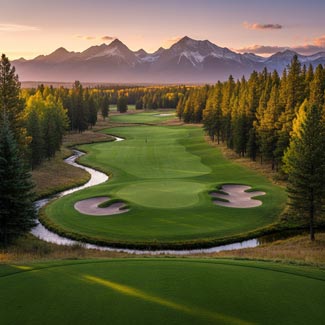
- Layout & Elevation: A classic opening par-5 that offers a chance for an opening birdie. The hole plays significantly downhill from the tee, with a drop of approximately 60 feet to the fairway below. The hole is straight, but the creek on the left side guides the eye and the strategy throughout.
- Fairway & Green: The fairway is wide on the initial tee shot, but it narrows considerably on the second landing area. It has a gentle slope from right to left, which can funnel an approach shot toward the creek. The green is heavily guarded by bunkers on the left and right, with an undulating surface that slopes from back to front, making it difficult to get an uphill putt.
- Hazards: The primary hazard is the creek that runs the entire length of the hole along the left side of the fairway and continues alongside the green. A large fairway bunker is strategically placed on the left side of the fairway at 280 yards from the Blue tee. A dense stand of pines on the right defines the OB line for the entire hole.
Hole 2 – The Long Dogleg
| Par | Blue (Yards) | White (Yards) | Gold (Yards) | Red (Yards) | Handicap |
| 4 | 420 | 385 | 360 | 315 | 3 |
- Layout & Elevation: A challenging and long par-4 that doglegs sharply to the right. The tee shot plays slightly uphill to a crest, and the second shot plays downhill toward the green. The hole is a true test of strategic placement.
- Fairway & Green: The fairway starts wide but pinches dramatically at the dogleg, with a steep slope from left to right that can send an errant tee shot into the deep rough. The green is elevated and sloped significantly from back to front, making it difficult to stop an approach shot.
- Hazards: A large, rugged ravine with a small stream cuts across the fairway about 150 yards from the green. A dense cluster of aspen and pine trees guards the inside of the dogleg, with OB along the right side.
Hole 3 – The High Tee
| Par | Blue (Yards) | White (Yards) | Gold (Yards) | Red (Yards) | Handicap |
| 3 | 205 | 185 | 160 | 130 | 17 |
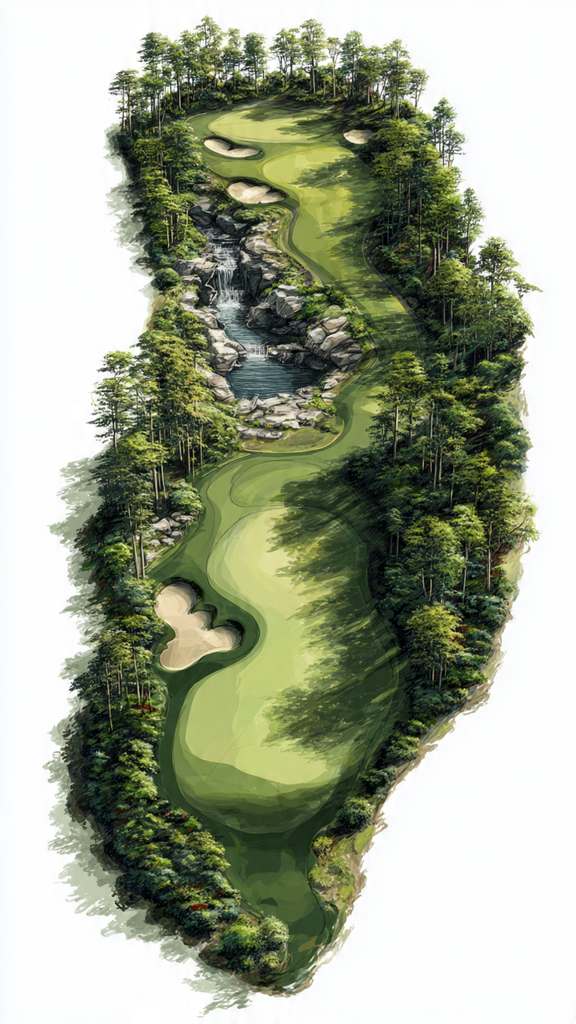
- Layout & Elevation: A spectacular par-3 from an elevated tee box. The shot plays straight downhill, with the green nestled in a small valley surrounded by trees.
- Fairway & Green: There is no fairway on this hole. The green is flat but firm, making it difficult to hold a shot. It is well-guarded with bunkers and has subtle slopes that can send a ball rolling off the putting surface.
- Hazards: The green is well-protected by two deep bunkers—one short-right and one long-left. A steep, forested embankment runs along the entire left side, leading to a small stream. OB is in play on both sides of the green.
Hole 4 – The Rocky Gauntlet
| Par | Blue (Yards) | White (Yards) | Gold (Yards) | Red (Yards) | Handicap |
| 4 | 450 | 415 | 390 | 360 | 5 |
- Layout & Elevation: A long, uphill par-4 that requires a powerful and accurate tee shot. The hole is straight but feels much longer than its stated yardage due to the significant elevation gain from tee to green.
- Fairway & Green: The fairway is relatively wide but slopes gently from left to right. The green is elevated and severely sloped from back to front, with a small ridge that runs through the middle.
- Hazards: A large, rocky outcrop borders the left side of the fairway, serving as a natural hazard. Two well-placed fairway bunkers are on the right side at 260 yards from the Blue tee. A small, deep bunker guards the front-right of the green.
Hole 5 – The Canyon Turn
| Par | Blue (Yards) | White (Yards) | Gold (Yards) | Red (Yards) | Handicap |
| 4 | 395 | 360 | 340 | 290 | 9 |
- Layout & Elevation: A short dogleg left par-4 that plays through a narrowing canyon. The tee shot plays slightly uphill, and the approach shot plays into a flat green.
- Fairway & Green: The fairway is defined by towering pine trees on both sides, creating a narrow, chute-like feel. The green is relatively flat and large, offering a generous target for the approach shot.
- Hazards: A large, crescent-shaped bunker is located on the inside of the dogleg, penalizing an aggressive line. A hidden bunker is positioned to the left of the green, making a missed approach shot challenging to recover from. OB is along the entire right side, defined by a stand of thick timber.
Hole 6 – Pine Valley
| Par | Blue (Yards) | White (Yards) | Gold (Yards) | Red (Yards) | Handicap |
| 5 | 580 | 535 | 510 | 455 | 1 |
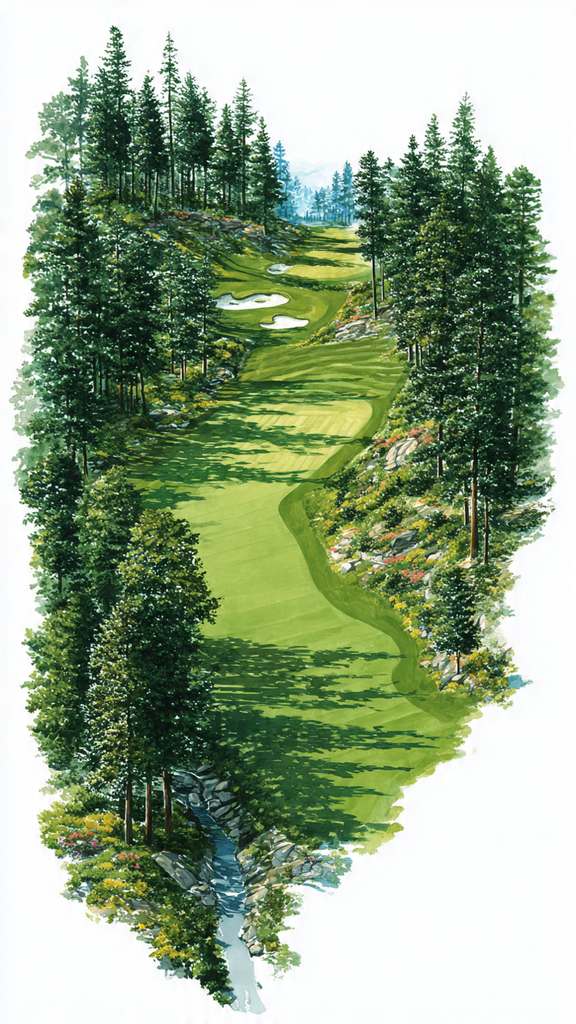
- Layout & Elevation: The longest and most difficult hole on the front nine. This par-5 plays straight but is defined by a steep downhill tee shot followed by a gradual uphill climb to the green. The hole is bordered by thick pine forests on both sides.
- Fairway & Green: The fairway is wide for the tee shot but narrows as it approaches the green. It has a slight slope from left to right. The green is large, with a gentle undulation from front to back, and it is perched on a small ridge.
- Hazards: A series of three small pot bunkers are strategically placed on the left side of the fairway at 290 yards off the tee to catch an aggressive drive. A large, deep bunker guards the front-left of the green. OB is defined by the dense forest that borders the hole, which also serves as a home for local wildlife.
Hole 7 – The Open Meadow
| Par | Blue (Yards) | White (Yards) | Gold (Yards) | Red (Yards) | Handicap |
| 4 | 365 | 335 | 310 | 275 | 13 |
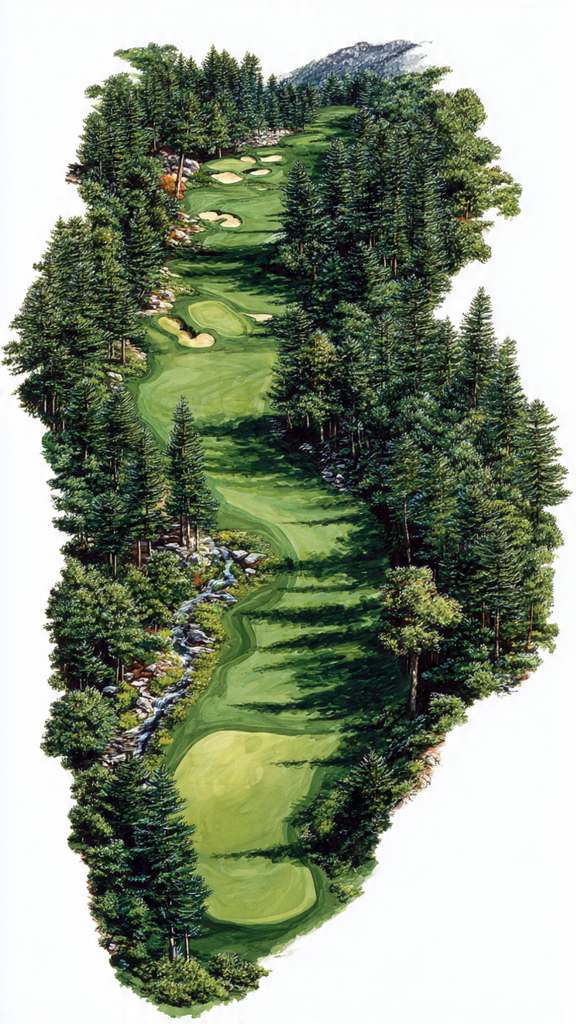
- Layout & Elevation: A short, relatively flat par-4 that opens up into a vast meadow after a tight tee shot.
- Fairway & Green: The fairway is skinny at the tee box, with a line of trees on both sides. It then opens up into a very wide, expansive landing zone for the second shot. The green is flat and unguarded by bunkers, making it a receptive target for a precise approach shot.
- Hazards: The main hazard is a dense stand of pines that guards the initial tee shot landing zone. A small, natural water hazard is located 100 yards short and right of the green.
Hole 8 – The Aspen Pond
| Par | Blue (Yards) | White (Yards) | Gold (Yards) | Red (Yards) | Handicap |
| 3 | 180 | 165 | 145 | 115 | 15 |
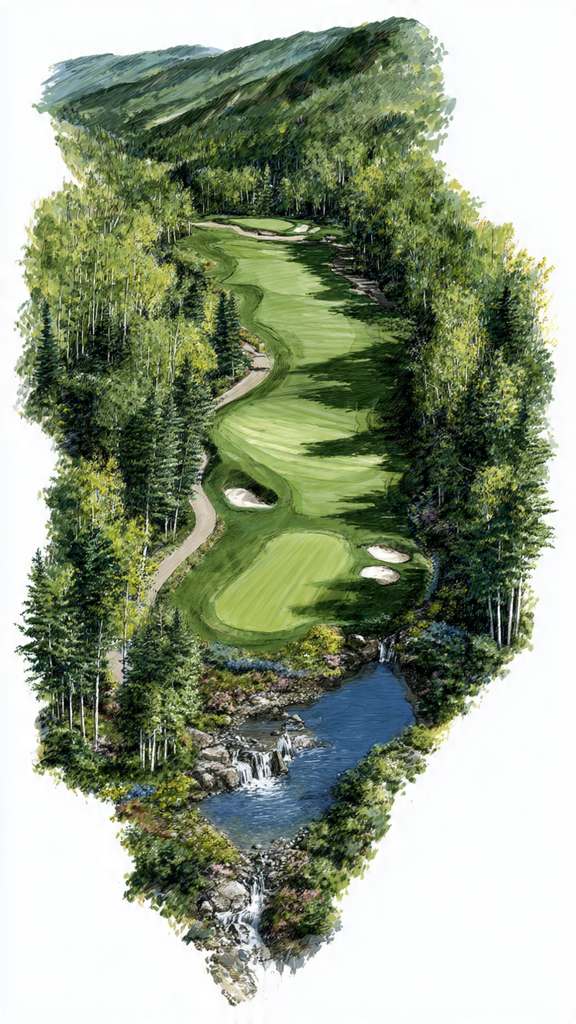
- Layout & Elevation: A picturesque par-3 that plays slightly downhill to a green set in a small amphitheater of aspen trees.
- Fairway & Green: There is no fairway. The green is undulating and guarded by a large, natural pond on the right side.
- Hazards: A small, picturesque pond with an accompanying waterfall borders the entire right side of the green. A single, deep bunker guards the front-left of the green. OB is in play long and left.
Hole 9 – The Homeward Bound
| Par | Blue (Yards) | White (Yards) | Gold (Yards) | Red (Yards) | Handicap |
| 4 | 445 | 410 | 380 | 340 | 7 |
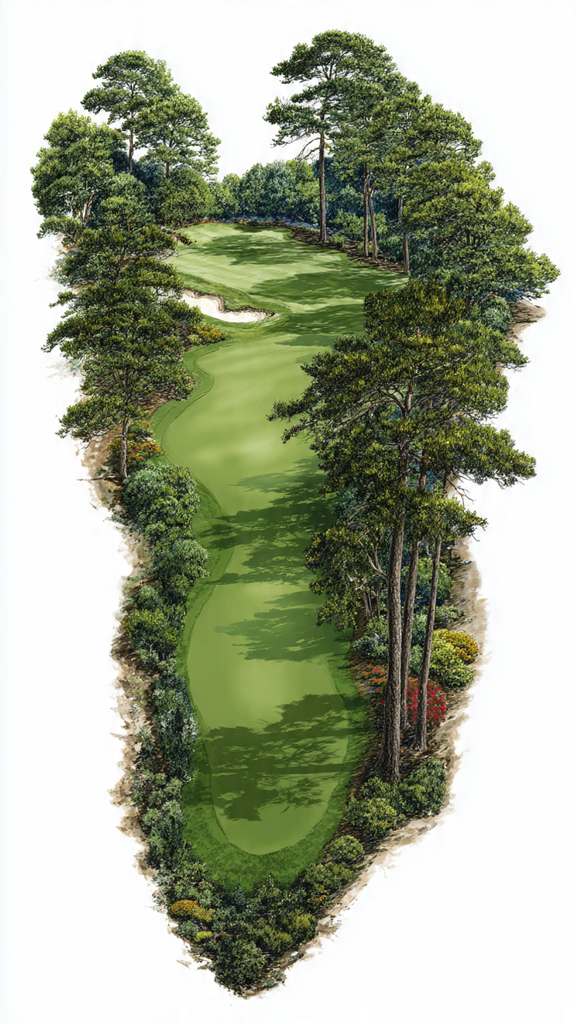
- Layout & Elevation: An uphill par-4 that doglegs slightly to the right around a thick stand of pines. The hole plays a club or more longer due to the elevation gain.
- Fairway & Green: The fairway is narrow at the tee shot landing area, but it widens significantly closer to the green. The green is large, with a severe slope from back to front.
- Hazards: A deep, grass-lipped bunker is strategically placed on the inside of the dogleg, at approximately 220 yards from the Blue tee. A large, two-tiered bunker guards the front of the green.
Hole 10 – The Plateau Perch
| Par | Blue (Yards) | White (Yards) | Gold (Yards) | Red (Yards) | Handicap |
| 4 | 430 | 400 | 370 | 320 | 2 |
- Layout & Elevation: A dramatic, elevated par-4 tee shot to a sprawling plateau fairway 100 feet below. The tee shot is semi-blind, with a line of pines providing a guide. The tee shot plays significantly shorter due to the elevation drop.
- Fairway & Green: The fairway is extremely wide, offering a generous landing area, but a slope from left to right can send a wayward shot toward OB homes. The green is flat and expansive but is surrounded by three deep greenside bunkers.
- Hazards: A series of three pot bunkers on the left side of the fairway, 200 yards from the Blue tee, collect aggressive tee shots. OB lines the entire right side of the hole.
Hole 11 – The Barranca
| Par | Blue (Yards) | White (Yards) | Gold (Yards) | Red (Yards) | Handicap |
| 4 | 400 | 375 | 350 | 300 | 8 |
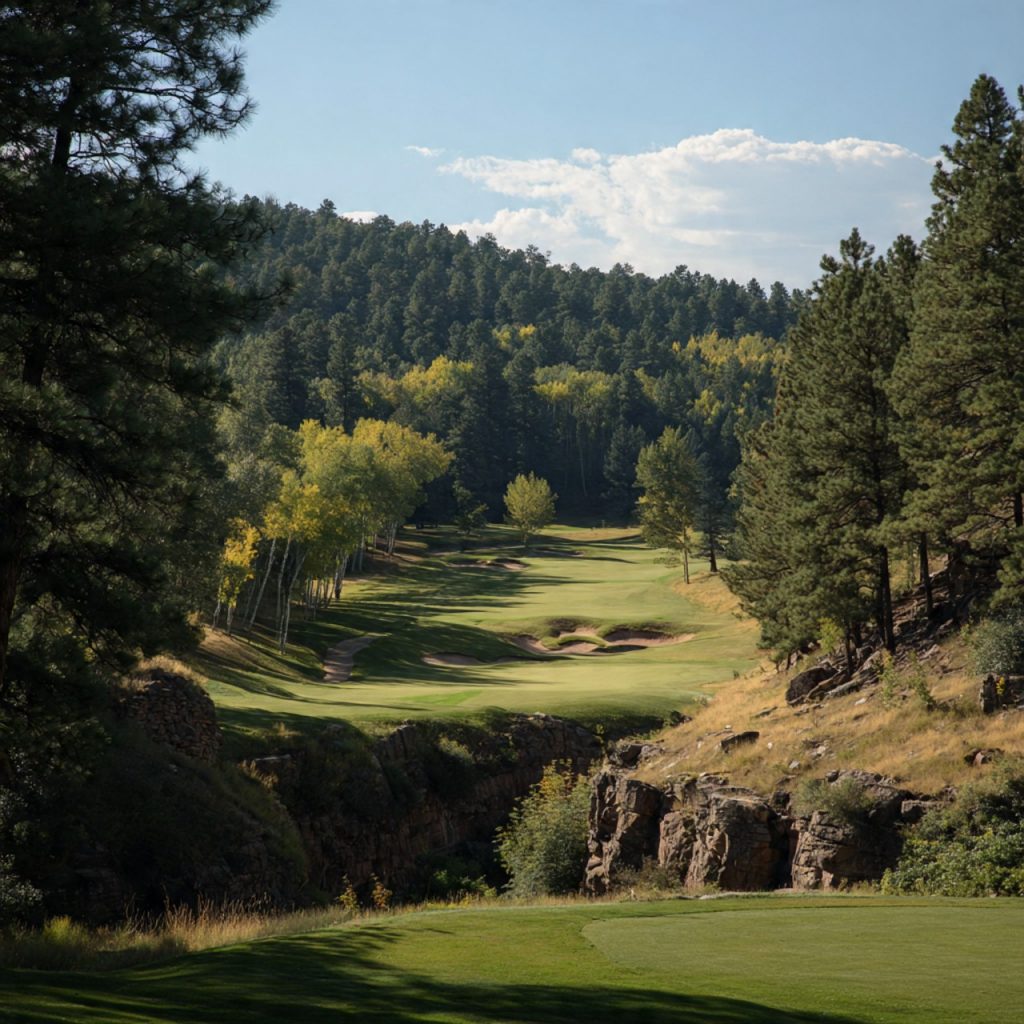
- Layout & Elevation: A classic mountain par-4 that plays downhill from the tee to an uphill approach shot. A deep barranca, or ravine, cuts across the hole, defining the strategy.
- Fairway & Green: The fairway is wide, but the barranca creates a chasm between the tee shot and the approach shot. The green is elevated, with a steep slope from back to front, and is protected by three bunkers.
- Hazards: The primary hazard is the barranca, which runs across the entire fairway at approximately 280 yards from the Blue tee. A cluster of dense aspen trees guards the left side of the fairway, creating an unplayable lie.
Hole 12 – The High Creek
| Par | Blue (Yards) | White (Yards) | Gold (Yards) | Red (Yards) | Handicap |
| 3 | 215 | 195 | 175 | 140 | 16 |
- Layout & Elevation: A long par-3 that plays slightly uphill to a green tucked into a small clearing. The hole is defined by the constant presence of a winding creek.
- Fairway & Green: The green is very long from front to back and has two distinct tiers. It is well-guarded with bunkers on the left and right.
- Hazards: A creek runs along the entire right side of the hole and wraps around the back of the green. Two deep greenside bunkers protect the left side of the green, while a steep slope and long rough are on the right.
Hole 13 – The Ponderosa
| Par | Blue (Yards) | White (Yards) | Gold (Yards) | Red (Yards) | Handicap |
| 4 | 470 | 430 | 400 | 360 | 4 |
- Layout & Elevation: A long and demanding par-4 that plays uphill for the entire length of the hole. The tee shot must navigate a narrow corridor of towering ponderosa pines.
- Fairway & Green: The fairway is narrow and slopes from right to left toward a stand of thick rough. The green is large, with a gentle undulation from front to back.
- Hazards: The dense ponderosa forest on both sides of the fairway defines the OB line for the entire hole. Two large fairway bunkers on the right side are in play at 280 yards from the Blue tee.
Hole 14 – The Cascade
| Par | Blue (Yards) | White (Yards) | Gold (Yards) | Red (Yards) | Handicap |
| 5 | 535 | 500 | 470 | 410 | 12 |
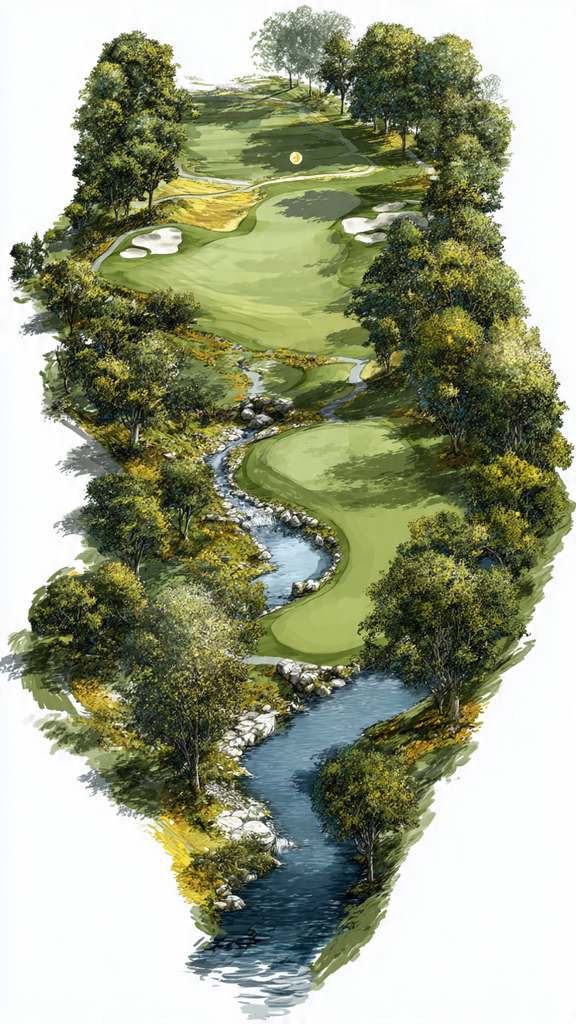
- Layout & Elevation: A downhill par-5 that plays to a fairway with a small creek running through its center. The tee shot is from a slightly elevated box, offering a good chance for a long drive.
- Fairway & Green: The fairway is wide and slopes from left to right, with a large, flat landing area for the second shot. The green is undulating and protected by a large bunker on the left.
- Hazards: A winding creek cuts across the fairway at 300 yards from the Blue tee, and a large, flat water hazard is positioned to the right of the green. Two fairway bunkers are strategically placed on the left side of the landing zone.
Hole 15 – ‘The Summit Drop’
| Par | Blue (Yards) | White (Yards) | Gold (Yards) | Red (Yards) | Handicap |
| 3 | 200 | 180 | 155 | 125 | 18 |
- Layout & Elevation: A visually stunning par-3 from a dramatic, elevated tee box. The shot plays to a small, secluded green tucked into a clearing, with a 150-foot vertical drop from tee to green.
- Fairway & Green: There is no fairway. The green is narrow and severely sloped from back to front, making it difficult to hold.
- Hazards: A small, picturesque stream runs across the front of the green, with a beautiful waterfall serving as a visible hazard on the left. Two small but deep pot bunkers are positioned short and right of the green, while OB lines the woods on both sides.
Hole 16 – The Winding Creek
| Par | Blue (Yards) | White (Yards) | Gold (Yards) | Red (Yards) | Handicap |
| 4 | 375 | 340 | 315 | 280 | 10 |
- Layout & Elevation: A short but challenging par-4 that does not require a particularly long tee shot. The hole is defined by the winding creek that runs its entire length on the left side.
- Fairway & Green: The fairway is narrow and slopes from right to left toward the creek. The green is small and undulating, with a challenging front-to-back slope.
- Hazards: The creek is the primary hazard, with a small waterfall near the green. Two bunkers are strategically placed on the left side of the fairway, while OB is in play along the right side.
Hole 17 – The Ascent
| Par | Blue (Yards) | White (Yards) | Gold (Yards) | Red (Yards) | Handicap |
| 5 | 600 | 560 | 530 | 470 | 6 |
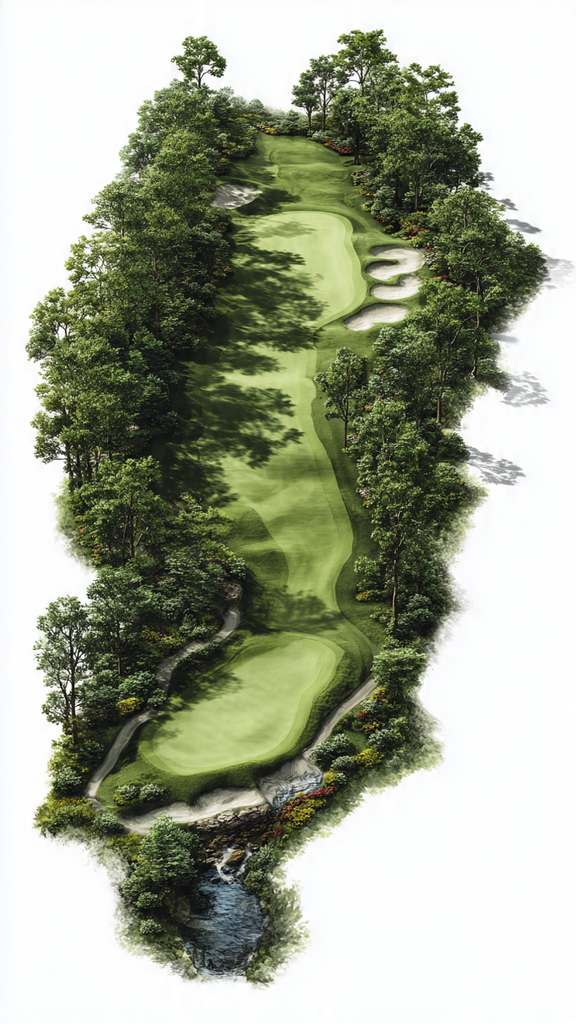
- Layout & Elevation: A long, uphill par-5 that is the second longest hole on the course. The hole plays through a clearing, with a significant elevation gain from tee to green, making it feel much longer than its yardage.
- Fairway & Green: The fairway is wide for the tee shot but narrows significantly as it approaches the green. The green is elevated, with a steep slope from back to front.
- Hazards: Two large fairway bunkers are strategically placed on the right side of the fairway at 290 yards and 340 yards from the Blue tee. A large, deep bunker guards the front-right of the green, while OB is in play on both sides.
Hole 18 – The Homestretch
| Par | Blue (Yards) | White (Yards) | Gold (Yards) | Red (Yards) | Handicap |
| 4 | 480 | 445 | 410 | 375 | 14 |
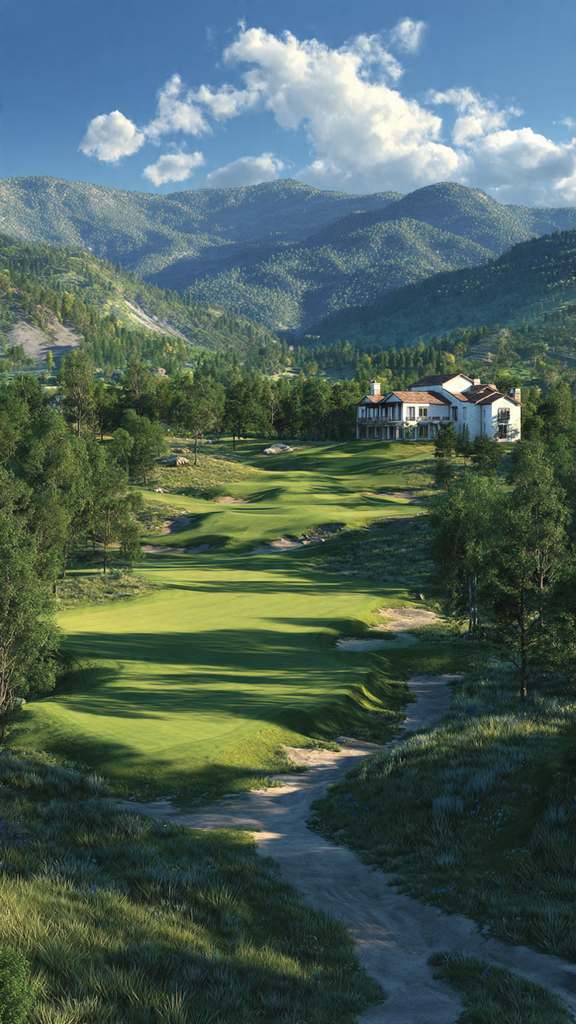
- Layout & Elevation: A long and demanding finishing par-4 that plays straight and slightly downhill to a green positioned below the clubhouse. The approach shot plays into a narrow opening, with a beautiful backdrop of the course and the surrounding mountains.
- Fairway & Green: The fairway is wide and slopes from right to left, with a large, flat landing area. The green is undulating, with a slope from back to front and a small ridge that runs through the middle.
- Hazards: Two large fairway bunkers are strategically placed on the left side of the fairway at 260 yards from the Blue tee. A large, deep bunker guards the front-right of the green, while OB is in play along the left side.
8. The Signature Hole: Hole 15 – ‘The Summit Drop’
Hole 15, aptly named “The Summit Drop,” is the undisputed signature hole of GCI Mountain Creek Golf Course. Its designation is based on the overwhelming sense of natural beauty and strategic allure that confronts a player from the moment they step onto the tee box. Perched on a dramatic rocky bluff, the tee offers a breathtaking panoramic view of the distant Gore Mountain Range, with a secluded green nestled 150 feet below, framed by a pristine clearing of aspens and pines.
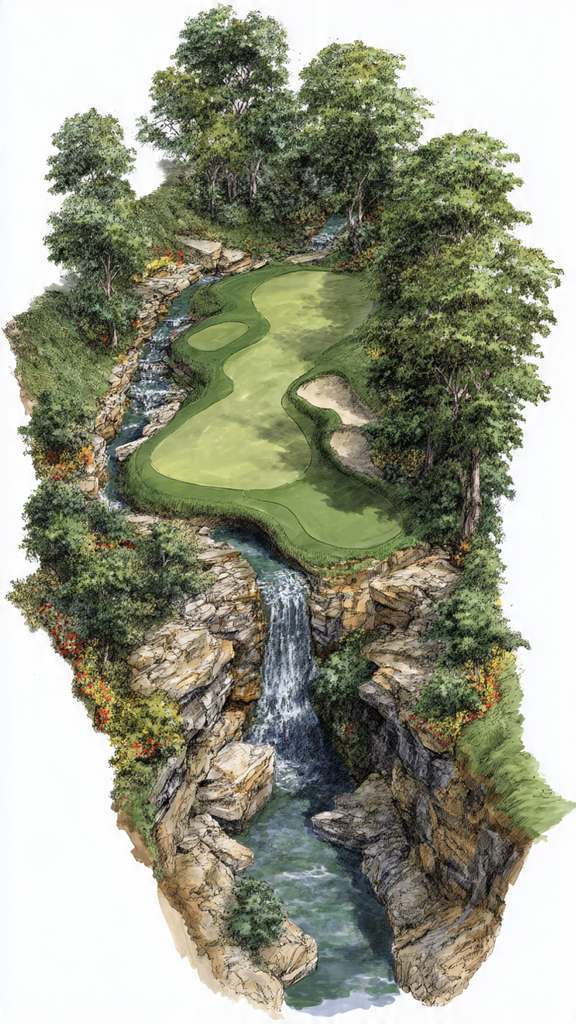
The hole is a testament to the design philosophy of embracing the land’s dramatic features. The serene sound of a cascading waterfall, which feeds the stream that runs across the front of the green, provides a captivating backdrop. This visual and auditory experience is an unforgettable moment of the round.
Beyond its aesthetic appeal, the hole presents a compelling and unique strategic challenge. The extreme vertical drop, a hallmark of mountain golf, makes the stated yardage of 200 yards from the Blue tees highly deceptive. The high-altitude aerodynamics, combined with the significant elevation change, means a player will likely only need a mid-iron, an exercise in trusting the physics of the game. The green itself is a small, elusive target, with a severe slope from back to front that demands a soft, precise landing. Shots that are even slightly off-target can easily find the small pot bunkers short and right, or worse, the OB that lines the dense woods on both sides of the hole. The beauty of this hole lies in its duality: it is both a stunning visual spectacle and a true test of a player’s nerve, precision, and understanding of the unique conditions of mountain golf.
Get a complete hole-by-hole, shot-by-shot strategy guide for this course, personalized for your game, in one of our Course Strategist Strategy Guides
0 Comments